Obwohl sie seit über sechshundert Jahren in Deutschland ansässig sind, werden Sinti und Roma oft noch immer als Fremdkörper betrachtet. Dabei haben sie die europäische Kultur, allem voran die Musik, maßgeblich geprägt. Die noch junge Internetplatform RomArchive will das ändern. Mit einem einzigartigen Angebot an Informationen, Audiobeiträgen und Videos will sie ein Bewusstsein für den kulturellen Reichtum der Sinti und Roma sowie ihren großen Einfluss auf die europäischen Nationen schaffen.
Text: Erik Prochnow
„Die verbreitete Annahme, Roma seien ein fahrendes Volk, ist falsch.“
Selbst das allgemeine Leid des Krieges beendet nicht ihre Ausgrenzung. „Laut Berichten wurden die geflüchteten ukrainischen Sinti und Roma in der Slowakei oder Ungarn etwa bei Unterkunft und Verpflegung benachteiligt“, beobachtete Romani Rose, Vorsitzender des Zentralrats Deutscher Sinti und Roma Ende März. Genau wie die Juden erfährt die mit bis zu zwölf Millionen Menschen größte ethnische Minderheit Europas seit Jahrhunderten Verfolgung, Diskriminierung und Auslöschung. Doch anders als bei Menschen jüdischer Herkunft bleibt der öffentliche Aufschrei hier bis heute aus. Wie schwer sich die Nationen im Umgang mit ihrer Geschichte tun, zeigt das Beispiel Deutschland. Lange galt der als Porajmos („das Verschlingen“) bezeichnete Genozid an geschätzten fünfhunderttausend Roma im Dritten Reich als vergessener Holocaust. Erst am 17. März 1982 erkannte die damalige Regierung unter Bundeskanzler Helmut Schmidt das Verbrechen als Völkermord an. Das damit verbundene Recht auf Entschädigung blieb für viele Opfer bis heute allerdings ein leeres Versprechen. Und ein 1992 geplantes Mahnmal brauchte zwanzig Jahre bis zu seiner Einweihung in Berlin. „Wir erleben noch immer Stigmatisierung etwa bei der Wohnungs- oder Jobsuche, und Sportler sowie Künstler unserer Minderheit stehen nicht offen zu ihrer Herkunft, aus Angst vor einem Karriereabbruch“, beschreibt Rose, der die Delegation beim Treffen mit Schmidt vor vierzig Jahren anführte, die Alltagserfahrung vieler Sinti und Roma.
Beide Gemeinschaften haben zwar einen gemeinsamen ethnischen Ursprung, doch sie bilden keine einheitliche Nation. Das nur im Deutschen gebräuchliche Wortpaar unterscheidet daher geografisch zwischen den in Mittel-, Nord- und Westeuropa ansässigen Sinti sowie den ost- und südeuropäischen Roma. Forscher gehen davon aus, dass beide Gruppen etwa vor rund tausend Jahren aus Indien und Pakistan nach Europa einwanderten. Die verbreitete Annahme, Roma seien von ihrer Natur aus ein fahrendes Volk, ist jedoch völlig falsch. Oft wurden sie durch wirtschaftliche Not, Vertreibung oder Diskriminierung dazu gezwungen. In Deutschland ist ihre Anwesenheit seit dem dreizehnten Jahrhundert bekannt. „Mich stört am meisten, dass Sinti als Fremdkörper angesehen werden, obwohl sie seit über sechshundert Jahren in Deutschland ansässig sind“, kritisiert die Musikerin Dotschy Reinhardt, die mit den beiden Sintijazzlegenden Django und Schnuckenack Reinhardt verwandt ist und in ihrem grenzüberschreitenden Jazz immer wieder die Wurzeln ihrer Kultur zum Leben erweckt.
Rund siebzigtausend Sinti und Roma leben laut Zentralrat derzeit in Deutschland. Obwohl sie neben Dänen, Friesen und Sorben in Deutschland seit 1998 als eine der vier schützenswerten nationalen Minderheiten gelten, ist der Weg zur Anerkennung im Alltag immer noch weit. Das überrascht umso mehr, da die Roma das Kulturleben Europas und hier insbesondere das der Musik maßgeblich mitgeprägt haben. Werke von Beethoven, Mozart, Haydn und vor allem Liszt wurden stark von den Roma beeinflusst. Sie schufen Stile wie Sintijazz, Balkanbeats oder die einzigartige Musik der Vlachen. Flamenco würde es ohne die Gitanos, wie die Roma in Spanien heißen, gar nicht geben.
„Angesichts dieser Tatsache war es an der Zeit, die Stimme nicht nur gegen Antiziganismus zu erheben, sondern den kulturellen Reichtum der Sinti und Roma zu präsentieren“, sagt die freischaffende Kuratorin und Kulturproduzentin Isabel Raabe. Gemeinsam mit ihrer Kollegin Franziska Sauerbrey initiierte sie 2015 das Projekt „RomArchive – Digitales Archiv der Sinti und Roma“, das 2019 online an den Start ging. Das mit 3,75 Millionen Euro von der Kulturstiftung des Bundes geförderte Projekt wird heute vom Dokumentations- und Kulturzentrum Deutscher Sinti und Roma geleitet. „Das einzigartige Archiv präsentiert neben geschichtlichen Informationen die ganze künstlerische Vielfalt der Sinti und Roma in bildender Kunst, Musik, Tanz, Theater, Film und Literatur“, beschreibt es die Berliner Initiatorin. Neben ausführlichen Hintergründen über die Volksgruppe bietet das Archiv anhand zahlreicher Interviews, Videos und Audiobeiträge tiefgehende Einblicke in die kreative Kultur der Sinti und Roma. Einen Auszug der Informationsfülle veröffentlichte Raabe im Februar gemeinsam mit Rose und dem Berliner Kurator und Künstler Moritz Pankok in dem wunderbar aufbereiteten Buch Widerstand durch Kunst – Sinti und Roma und ihr kulturelles Schaffen.
Entscheidend beim Aufbau der stetig wachsenden Informationsplattform war, dass die Sinti und Roma den Inhalt selbst zusammenstellen. „Bislang wurde unsere Gruppe immer von außen dargestellt und unsere Stimme, wie wir uns und unsere Kultur sehen, nicht gehört“, erklärt die Berliner Sängerin Tayo Awosusi-Onutor, Tochter einer deutschen Sintizza und eines nigerianischen Vaters, die selbst als Künstlerin im RomArchive erwähnt wird. Als Afrosintizza war sie von klein auf mit Diskriminierung konfrontiert. In ihren künstlerischen Projekten als Songschreiberin, Buchautorin und Filmemacherin setzt sie sich intensiv mit der Perspektive vor allem der jungen Sinti und Roma auf das Leben in Deutschland auseinander. „Ich will damit zuallererst ein Zeichen gegen Rassismus und Stereotype setzen“, sagt die 44-jährige Aktivistin. Die Soul-, Jazz-, RnB- und Gospelmusikerin legt daher auch viel Wert darauf, in Romanes, der Sprache der Sinti und Roma zu singen. Denn Sprache und Musik sind wesentlicher Bestandteil der Identifikation der Volksgruppe. Deshalb spielt auch die musikalische Erziehung eine große Rolle, vor allem weil es oft der einzige Weg ist, um Geld zu verdienen. „Wir beobachten unsere Kinder, wie sie sich entwickeln, und wenn jemand dann etwa gut Gitarre spielt, ist das eine große Freude für uns, ein kleiner Schatz, der all die Musik bewahrt, die wir in uns tragen“, beschreibt es etwa Pedro Peña, einer der renommiertesten Flamenco-Gitano-Gitarristen.
Tayo Awosusi-Onutor
Fotos: Bodo Gierga, Wikipedia, CC BY-SA 2.0
„Was uns auszeichnet, ist die Fähigkeit, zu improvisieren und Emotionen einfließen zu lassen.“
Diese Liebe für die Musik und damit die Authentizität in der Aufführung ist auch der Grund, warum Henry Ernst 1997 sein auf die Romamusik spezialisiertes Label Asphalt Tango Records gründete. Sein Hobby war es, auf Reisen mit einem DAT-Rekorder einheimische Musik aufzunehmen. „Auf einer solchen Rumänientour empfahl man mir beim Kauf von Diesel auf einem Bauernhof zufällig eine Band namens Fanfare Ciocarlia im Nachbardorf“, erinnert sich der Leipziger und fährt fort: „Aus dem geplanten Aufenthalt dort von einer Stunde wurden schließlich drei Monate.“ Ernst freundete sich mit der inzwischen legendären Balkanblaskapelle an und organisierte für sie eine Tour durch Deutschland. „Auch wenn die Tour ein großer Erfolg war, produzierte sie für mich nur Schulden, da ich mich in dem Metier überhaupt nicht auskannte“, sagt Ernst. Kaum war die Band wieder zu Hause, meldete sich allerdings der WDR bei ihm, der die Fanfare für ein Weltmusikfestival engagieren wollte. „Angesichts meiner Erfahrungen wollte ich denen das als viel zu teuer ausreden, doch meine Honorarberechnungen von 10.000 DM waren für den WDR kein Thema“, schüttelt der 51-Jährige noch heute ungläubig den Kopf. Seitdem betreut er nicht nur Fanfare Ciocarlia als Manager, er produzierte auch zahlreiche andere berühmte Romabands vom Balkan wie Mahala Rai Banda oder Kal.
Fanfare Ciocarlia
Fotos: Asphalt Tango Records
Ausschlaggebendes Kriterium für seine Auswahl ist Authentizität. „Doch diese Art der Balkanmusik stirbt leider langsam aus, weil sich der Turbo-Balkanfolk mit seinen Mainstreammelodien, seinen oberflächlichen Texten und Gesang à la Helene Fischer, der vor allem auf Hochzeiten gespielt wird, als viel lukrativer erweist“, sagt Ernst. Da wolle einfach keiner mehr die alte Musik spielen, und Nicht-Roma könnten ihn nicht authentisch auf die Bühne bringen. Aber was zeichnet die Authentizität der Romamusik genau aus? In ihren Texten und in ihrem Ausdruck sind es sicherlich die große Melancholie sowie die Sehnsucht nach Freiheit und Anerkennung. „Gerade den sogenannten normalen Menschen bietet die Musik damit eine Fantasieflucht aus dem Alltagstrott“, sagt die Tschechin Petra Gelbart, Kuratorin für den Bereich Musik des RomArchive und Romamusikerin. Aus musikwissenschaftlicher Sicht gebe es kein Genre, das die unterschiedlichen Stile der Sinti und Roma vereinen würde. Vielmehr hätten sich die verschiedenen Richtungen in die kulturellen Musikstile der jeweiligen Länder integriert und diese maßgeblich beeinflusst. Ein gutes Beispiel dafür ist der Flamenco, in den die Gitanos vor allem die Fußarbeit, die Finger- und Armbewegungen sowie den zwölfschlägigen Rhythmus einbrachten. Oder die vom Romanes beeinflusste Chabo-Sprache, die sich im deutschen Hip-Hop entwickelt hat. Das RomArchive porträtiert daher auch die gesamte Bandbreite der Romamusik vom Balkan über Mittel- bis nach Nord- und Westeuropa.
Entscheidend sind Bildung und Aufklärung – und zwar jeden Tag.“
Was die Musik der Roma auszeichnet, erklärt sagt der seit vielen Jahren in Berlin lebende ungarische Jazzgitarrist Ferenc Snétberger: „Ich denke, dass die Fähigkeit zur Improvisation, Musizieren in der Familie, das autodidaktische Erlernen eines Instrumentes über das Gehör und Beobachtung ein großer Vorteil denen gegenüber sind, die zuerst über Theorie an Musik herangeführt werden. Ich sehe das auch in unserer Musikschule, die Kids sind lockerer, freier im gemeinsamen Musizieren und eher in der Lage, Emotionen einfließen zu lassen.“ Den ebenfalls damit einhergehenden Nachteil erkennt der Landauer Sintijazzgitarrist Lulu Weiss: „Weil ich keine Noten lesen kann, muss ich doppelt so viel proben.“ Eine Besonderheit seines Ensembles ist es, dass er den traditionellen Sintijazz nicht nur mit Geige und Klarinette arrangiert, sondern inzwischen auch mit Saxofon. Es ist also mehr die Art und Weise, wie Sinti und Roma spielen, als ein bestimmter Stil. Das bestätigt Gelbart: „Virtuosität, rhythmisches Interesse, Tempowechsel, veränderte Tonstufen und eine komplexere Harmonik zählen zu den Elementen, die Sinti und Roma häufig an bestehende Musik herantragen.“ Dazu kommt ihre ganz unterschiedliche Ausrichtung, was die Instrumente betrifft. „Musikalisch ist die Gitarre das Instrument der Sinti, Roma spielen eher Geige, Zymbal oder Blasinstrumente“, sagt Snétberger.
So heterogen wie die Musiklandschaft der Sinti und Roma in Europa ist, präsentiert sie sich auch in Deutschland. Von den Roma und Sinti Philharmonikern, die der Dirigent Riccardo Sahiti 2002 gründete, über den Weltmusiker Snétberger, der auf seinem aktuellen Album seinem Volk eine eigene Suite widmet, bis zu den Sintijazzern Weiss und Reinhardt oder dem Karlsruher Rapper Sin2. Was sie alle vereint, ist ihr Engagement gegen Rassismus und für das große kulturelle Erbe der Sinti und Roma. „Entscheidend dabei sind Bildung und Aufklärung – und zwar jeden Tag“, bekräftigt Sängerin Tayo. Das RomArchive ist dafür der beste Einstieg, um die oft unbewussten Vorurteile jetzt zu ändern.
Buchtipp:
Moritz Pankok, Isabel Raabe, Romani Rose (Hg.), Widerstand durch Kunst – Sinti und Roma und ihr kulturelles Schaffen (Ch. Links Verlag, 2022)
Weitere Links:
- www.asphalt-tango.de
- www.facebook.com/sin2music
- www.luluweiss.de
- www.proton-berlin.de/kuenstler/dotschyreinhardt_info.php
- www.snetberger.com
- www.tayo-online.de
Videotipps:
- Fanfare Ciocarlia, It Wasn’t Hard To Love You (Asphalt Tango Records, 2021)
- Dotschy Reinhardt, Chaplin’s Secret (Galileo, 2018)
- Ferenc Snétberger, Hallagtó (ECM, 2021)
- Lulu Weiss, Lulu Est De Retour (Eigenverlag, 2018)



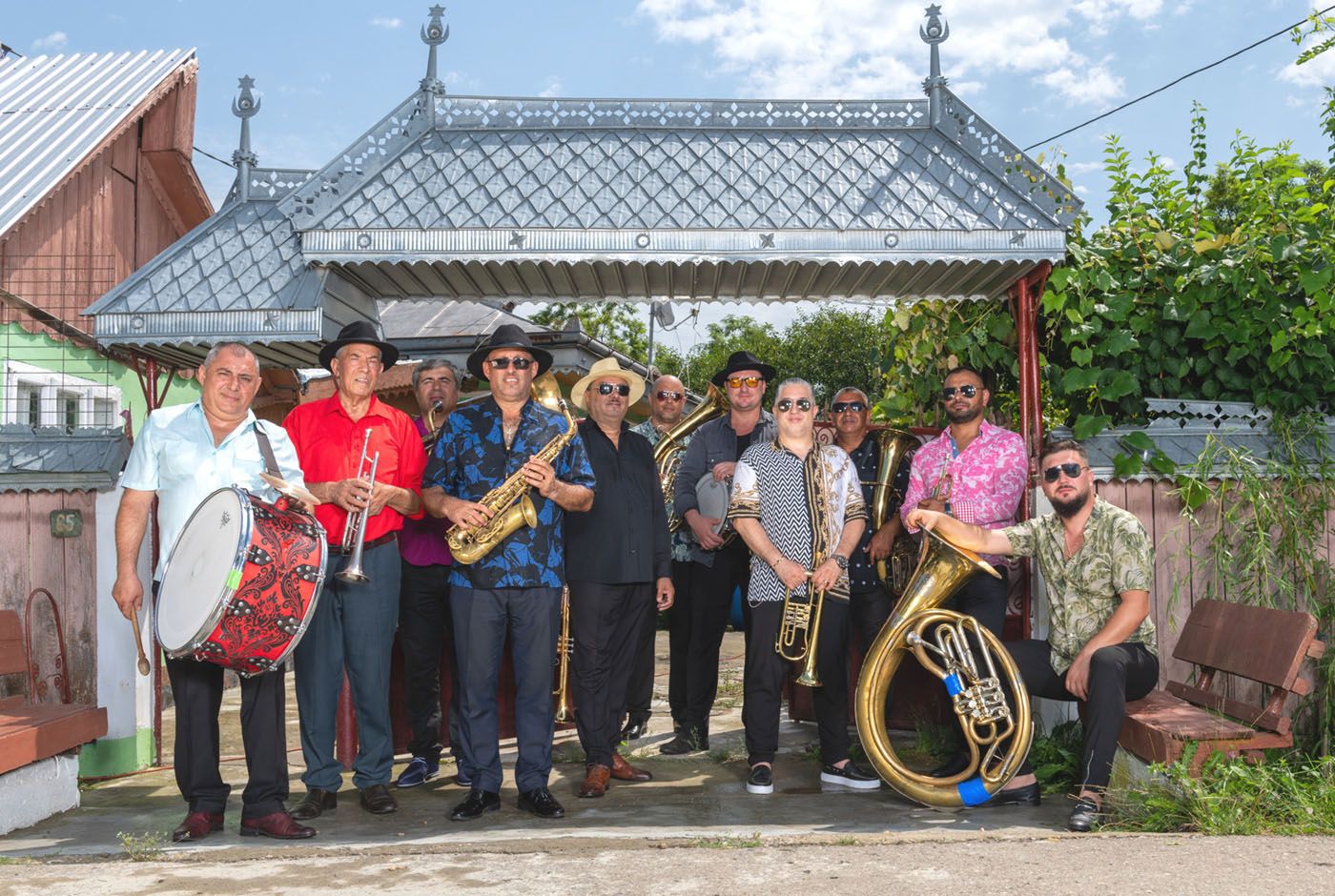

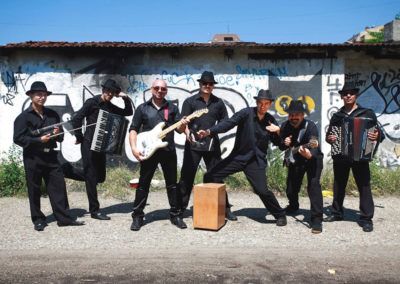
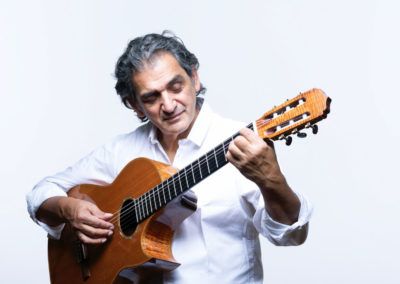

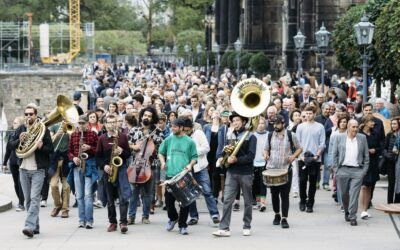
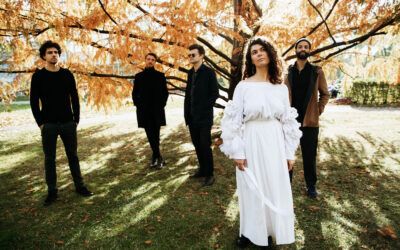
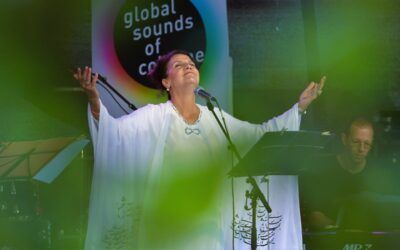


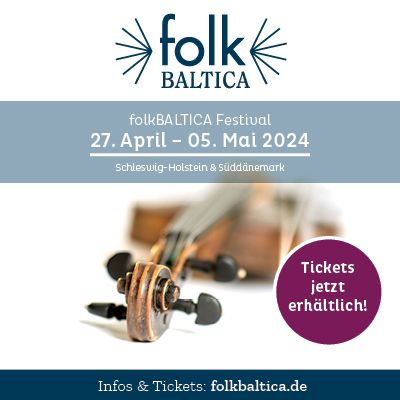

Können wir Teile des höchst interessanten Artikels in unserem Programmheft zu einem Chorkonzert unter dem Titel „So still wie mein Herz – Lieder der Roma und Sinti“ unter Angabe der Quelle zitieren oder gibt es da Probleme?
Es geht um den Gemischten Saarbrücker Damenchor.
Wir würden uns freuen, wenn Sie uns die Erlaubnis geben würden.
Vielen Dank!
Petra Norrick, Chormitglied und Redaktion
Liebe Frau Norrick, vielen Dank für Ihre Anfrage. Gerne können Sie aus meinem Artikel zitieren. Ich würde mich allerdings freuen, wenn Sie mir kurz mitteilen, welche Passagen Sie in welchem Rahmen vorstellen möchte. Vielleicht können Sie mir auch kurz mitteilen, wo und wann das Konzert stattfindet. Vielleicht bin ich ja gerade in der Nähe. Mich erreichen Sie am besten per Mail unter erik.prochnow@online.de .
Herzliche Grüße, Erik Prochnow